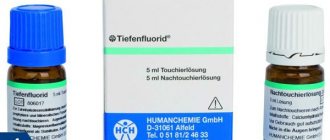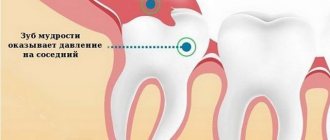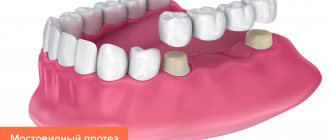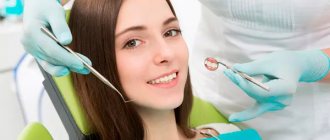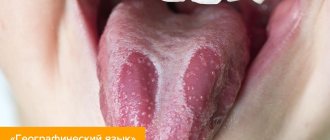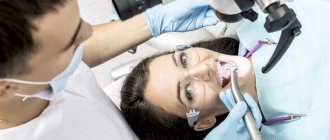Symptoms Causes Features Diagnostics Treatment methods Whitening Prevention
Tetracycline teeth are a type of systemic enamel hypoplasia that occurs as a result of taking antibiotics of the tetracycline group, when teeth and their rudiments are formed, and mineralization of dental and bone tissue occurs. It is characterized by a pronounced change in the color of the enamel and its structural disturbance. The cutting edges of the incisors and the chewing surface of the molars are painted. The color of tetracycline teeth can vary from bright yellow to blue-brown, the severity of the shade depends on the drug, its dose, and duration of use. Not only the surface enamel layer is stained, but also deeper tissues, which makes it difficult to restore natural whiteness.
Symptoms
- Persistent irreversible discoloration;
- pigmentation of gray, yellow, brown, brown shade;
- the entire crown or a separate area is painted;
- thinning of enamel, cracks, chips;
- sensitivity to hot, cold;
- Tetracycline staining of teeth is uneven, looks like transverse stripes on the enamel.
Treatment
If the tooth is uniformly and slightly grayish or yellowish in color, then it can be easily bleached, and usually this procedure is sufficient. Laser whitening and whitening using the Zoom system have a good effect.
If the tooth is uniformly colored in an intense yellow or gray color, you can try to whiten it, but it is usually best to restore it with veneers.
If the tooth is colored unevenly in an intense color, and the color looks like horizontal stripes, then in this case bleaching is completely ineffective, and the only treatment option is either restoration with veneers or covering the tooth with a crown.
In case of tetracycline damage to teeth, it is imperative to carry out a procedure for remineralization of the enamel, since the disease causes a violation of its mineralization.
Causes of pathology
The main negative factor of medical discoloration is the use of tetracycline antibiotics during the formation and mineralization of dental tissues. That is, in the prenatal period, up to 8-12 years
, while milk units are being replaced with permanent ones. The antibiotic does not have this effect on adults. The side effect occurs due to the ability of tetracycline to bind with calcium to form stable compounds that are deposited in areas where mineralization is currently occurring - bones, teeth and their rudiments.
The severity of the changes depends on the dosage of the drug and duration of use. The higher the dosage and the longer the course of treatment, the darker the enamel, the more complex its structural disorders, even underdevelopment.
Tetracycline staining of teeth is rare, since such antibiotics are prescribed to women during pregnancy and children under 8 years of age only in isolated clinical cases. Treatment with tetracycline is justified when the possible side effect of the drug is less dangerous than the consequences of the existing disease.
Reasons, features, action
Tetracycline antibiotics became widespread in the middle of the last century. And that's when the problem of tetracycline teeth arose. For a long time, taking the drug was not associated with changes in the color of tooth enamel. It was only in the eighties that it was discovered that when tetracycline enters the body, it combines with calcium and is mineralized. As a result, the structure of bone tissue is disrupted, both in the teeth and in the musculoskeletal system. It should be said that mineralization occurs only in those tissues that have not yet had time to fully form.
At risk are children under 12 years of age, as well as unborn babies whose mothers take drugs containing tetracycline during pregnancy. For this reason, taking the drug is prohibited:
- women bearing a child;
- children under adolescence.
The intensity of tooth staining depends on the dose - the more antibiotic enters the body, the more noticeable the defect. The color of enamel changed by tetracycline varies from light yellow to deep bright orange. However, staining is not the worst consequence of taking tetracycline drugs. Worse, in large doses they lead to improper formation of tooth enamel. And this brings a number of additional problems, including an increased risk of caries.
Important! Changing the color of teeth is possible both after taking the medicine directly and after a long time. In this case, a concomitant factor may be sunlight, time, consumption of products that contain dyes, etc.
Tetracycline staining of tooth enamel.
Features of tetracycline staining
Staining under the influence of tetracycline is referred to as deep pigmentation of hard dental tissues. The discoloration may cover the entire coronal part or be observed in individual areas of the tooth. Under the influence of light and food coloring, the color of the enamel changes and becomes darker. Typically, the color appears as a transverse stripe around the crown with the greatest color intensity in the cervical area.
For a long time, the problem of tetracycline dental discoloration was associated with pediatric patients. But similar pathologies also occur in adults, for example, after long-term use of minomycin in the treatment of acne.
What affects the color of teeth
Depending on the dosage of antibiotics of this series the patient took, his teeth may acquire one of the following shades:
- yellow or lemon;
- brown;
- grey;
- orange;
- combination of brown with yellow or orange;
- brown;
- dark grey.
However, not only the dosage of the drug affects the condition of tooth enamel. Its color changes under the influence of many factors, including:
- individual characteristics of a person;
- time flow;
- consumption of food additives and dyes;
- sunlight;
- allergic reactions.
Tetracycline stains are more often a cosmetic defect, without causing significant harm to the body by their presence.
Diagnostics
The diagnosis is based on an examination, anamnesis, and clinical examination. Since the pathology has common symptoms with other lesions of hard dental tissues, differential diagnosis of tetracycline teeth is carried out with the following pathologies:
- fluorosis;
- hemolytic disease of newborns;
- dentin dysplasia;
- congenital discoloration due to Rh conflict during pregnancy;
- amelogenesis imperfecta;
- Stanton-Cadelon syndrome.
The dentist conducts a dental examination under ultraviolet light. Under UV radiation, tetracycline sites fluoresce (glow). The intensity of the glow depends on the amount of accumulated drug in the tissues. This is an absolute guarantee of accurate diagnosis, since tooth staining due to other reasons does not fluoresce under UV radiation.
There are no specific abnormalities in the OPTG image. Upon examination, tetracycline teeth are painless, have a rough surface, and there are symptoms of enamel hypoplasia.
Prevention
The risks of tetracycline teeth are now a well-known problem, so doctors familiar with it try to avoid, if possible, recommending tetracycline antibiotics for pregnant women and children under 12 years of age. But if there are no other possibilities, then, unfortunately, you have to choose the priority of the general health of the mother and child. The doctor may try to make the course of antibiotic therapy as short as possible, since the inclusion of antibiotic molecules in growing dental tissues is a process that takes quite a long time.
Request a consultation
Treatment methods
Treatment of tetracycline teeth is complex, aimed at eliminating discoloration and strengthening the enamel. To replenish the mineral composition of the enamel layer, remineralizing therapy is carried out - applications of fluoride and calcium-containing drugs, electro- and phonophoresis. Usually a course of 10-12 procedures
, if necessary, repeat it. For greater protection, crowns are coated with fluoride varnish.
Tetracycline staining is an irreversible discoloration
. Therefore, the second part of the therapy is aimed at aesthetic correction of teeth. To eliminate the aesthetic defect, tetracycline teeth in children are restored with a glass ionomer composition. The material is characterized by high adhesion to dental tissues and does not require surface treatment with acid-containing agents, which is important when the enamel is fragile. After application to the surface, the composite begins to release fluoride ions, which penetrate deep into the dental tissues, providing additional protection against caries.
In older age, to eliminate discoloration, whitening and orthopedic methods of color correction are used - veneering, prosthetics with crowns. Veneers and lumineers completely eliminate the aesthetic defect, regardless of the intensity of pigmentation. Teeth are subject to restoration along the smile line ( 8-10
upper,
6-8
lower central units).
Treatment and its stages
Considering that tetracycline does not so much stain the surface of the teeth as cause underdevelopment of dental tissues, treatment will be long and multifaceted. The main goal of the therapy will be to whiten the surface of the teeth and strengthen the enamel as a whole. Let's consider all stages sequentially.
Elimination of caries
Sanitation of carious lesions is a necessary part of the initial stage of any oral therapy. Before you begin to return your teeth to whiteness, you will need to cure all dental diseases.
Professional cleaning of teeth from plaque
This procedure is necessary for subsequent uniform whitening. Its main task is to eliminate plaque, bacteria and mineral deposits. After cleaning, the enamel tone lightens by 1-2 tones. The dentist removes deposits with ultrasound and washes them away with a stream of water. The operation takes 30 minutes and is completely painless.
Enamel remineralization
Enamel damage occurs due to insufficient mineralization during its formation. The most important stage of therapy will be strengthening the enamel by filling it with calcium, phosphorus and fluorine. Applications with a solution of sodium fluoride and calcium gluconate have proven themselves to be excellent. To improve the penetrating ability of the compositions, it is possible to prescribe electro- and phonophoresis. If the damage to the enamel was minor (especially in children), the remineralization procedure is carried out at home.
Polishing and fluorine varnish coating
After remineralizing therapy, the teeth are polished with abrasive pastes. Teeth are polished to slow down the re-formation of plaque and before restoring teeth with veneers. Fluoride varnish coating is necessary to give teeth additional hardness and also prevent mineral loss. Dried varnish forms a film on the teeth, which remains on the teeth for a long time and prevents the growth of bacteria on the surface of the enamel.
Enamel whitening
All of the above procedures are aimed at strengthening teeth and preventing their further destruction. To return your teeth to healthy whiteness, you will need whitening procedures or restoration of dental crowns. The choice of method will depend on the degree of pigmentation. Whitening using the ZOOM method can restore teeth to a healthy and natural color. Whitening can take place in the office or at home. In the first case, a special gel is applied to the teeth, the action of which is activated by the light of a special lamp. In the second case, an individual mouth guard is made. A brightening gel is placed in it and worn on the teeth for a strictly designated time. Bleaching occurs under the supervision of a specialist and in the absence of contraindications.
Can tetracycline teeth be whitened?
With slight or moderate pigmentation, the aesthetics of the dentition can be improved with the help of whitening. The final result depends on the initial shade of the enamel and the saturation of its original color. Given the unpredictable nature of individual shade changes during the procedure, achieving a specific effect is very difficult. Once the potentially achievable whiteness has been achieved, all subsequent attempts to improve the result are futile.
Whitening AMAZING WHITE
The method is effective for minor pigmentation. It is impossible to achieve ideal whiteness with its help, since the color change occurred from within the fabrics. The procedure takes about an hour; a gel with hydrogen peroxide and additional substances that help strengthen the enamel is applied to the surface of the teeth. Under the influence of a special lamp, the active substance is released, penetrates deep into the enamel, and breaks down coloring pigments.
Whitening ZOOM
Whitening tetracycline teeth with the ZOOM system will help improve the aesthetics of mild to moderate pigmentation (light gray or light yellow teeth). For bright gray or yellow shades, ZOOM whitening can also be used, but the effect will be less pronounced. To restore aesthetics, more than one procedure may be required. That is, tetracycline teeth can be lightened using whitening, but the result depends on the initial clinical data. Under positive clinical conditions, the color of the enamel after a course of treatment brightens by 10-12 tones
.
Combined teeth whitening with tetracycline will give results if the enamel is stained slightly, evenly, in any one shade. With uneven, intense pigmentation (the enamel is painted in stripes of blue, brown-orange, dark gray), the procedure is ineffective, and relapse is observed in the shortest possible time. The doctor selects the restoration method after a comprehensive analysis of the clinical situation.
Tetracycline antibiotics and tooth staining
Antibiotics of the tetracycline group (tetracycline, chlortetracycline, oxytetracycline, minocycline, their derivatives - doxycycline, metacycline, glycocycline, morphocycline, etc., their combinations with other antibiotics, for example, oletethrin; many have different trade names) are antimicrobial drugs with a wide spectrum of action. They are effective against most bacteria, the range of their use is extremely wide, although in certain cases they are inferior to other antibiotics (for example, penicillin), and they are used both internally and externally.
With regard to dental tissues, it is important that the specific molecular structure of these antibiotics ensures the irreversible formation of strong complexes with metal ions (calcium, magnesium) included in the structure of these tissues. In fact, the structural elements of these antibiotics from the complexes are not removed from the body, but accumulate. But complex formation is possible only in dental tissues during the period of their formation.
How to treat?
Patients with this problem experience discomfort and cannot boast of an open smile. In addition, there is a high probability of developing other diseases, so treatment should not be delayed.
The dentist chooses treatment methods depending on the progress of the disease:
- First degree violation. Bleaching using fluoride-containing solutions is possible.
- Second degree. A stronger effect is needed - ultrasonic bleaching is used. Additionally, enamel remineralization is used to restore it. In difficult cases, intracanal cleaning with chemical compounds is necessary.
- Third degree. The damage is so severe that restoration of the dental elements is necessary. Glass ionomer cement is used to restore the affected areas, lamination.
In addition, calcium supplements and vitamin complexes are prescribed to restore tooth enamel.
In difficult cases, when the shade appears again after any type of whitening, dentists resort to microprosthetics. Veneers or ceramic crowns are installed.
Can it be avoided?
In order to protect yourself from defects, you should be careful about the medications you take. Use tetracycline only as prescribed by a doctor; usually, therapists and other specialists prescribe antibiotics only when absolutely necessary.
In the event that an infant or an older child falls ill, and the pediatrician prescribes a tetracycline-containing drug, the dosage should be observed as accurately as possible, it should be reduced by him, and do not continue the course more than indicated.
Teeth exposed to this antibiotic cause discomfort to their owner. In order to avoid such problems, you should approach any course of therapy wisely and not self-medicate.
Nature of the clinical picture
The main symptom is a change in the color of the enamel. Over time, as mentioned above, the change in its shade and the intensity of this process may vary under the influence of external factors.
Usually, not the entire tooth is stained, but a separate part of it. Initially, the enamel color changes:
- in the cervical part;
- on the contours;
- on the folds of the corner teeth.
With small doses of the medicine taken, the enamel becomes yellow or lemon-colored. But even when the level of the substance in the blood is significantly exceeded, the color changes on individual parts of the tooth. The only difference is the color of the enamel: the darker it is, the more tetracycline the patient took.
Diagnostic criteria and techniques
Diagnosis of the disease is based on information obtained:
- during history taking;
- during the clinical examination of the patient.
If tetracycline staining is suspected, the doctor determines the duration of the course and dosage of antibiotics. During dental probing, the presence of this disease is indicated by the rough surface of the enamel. But when touching the damaged parts of the tooth, the patient does not experience pain.
Additional information is obtained by illuminating the affected enamel with ultraviolet rays. Pathology is indicated by the fluorescence effect. However, this phenomenon occurs only if the enamel has a light shade. When dental tissue is significantly damaged, the latter loses its ability to glow.
Diagnosis is carried out in order to differentiate the disease in question from other pathologies:
- fluorosis;
- congenital disorder of enamel color caused by Rh conflict;
- hereditary malformations of enamel and dentin.
To differentiate tetracycline teeth from other pathologies, an orthopantomogram is used, which in this case does not reveal any abnormalities in the area of dentin and tooth root.
